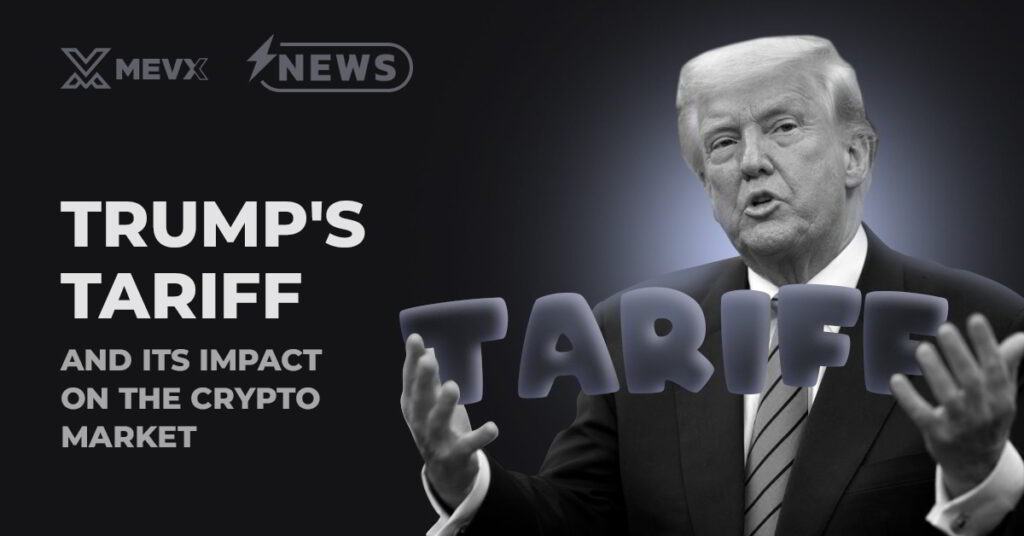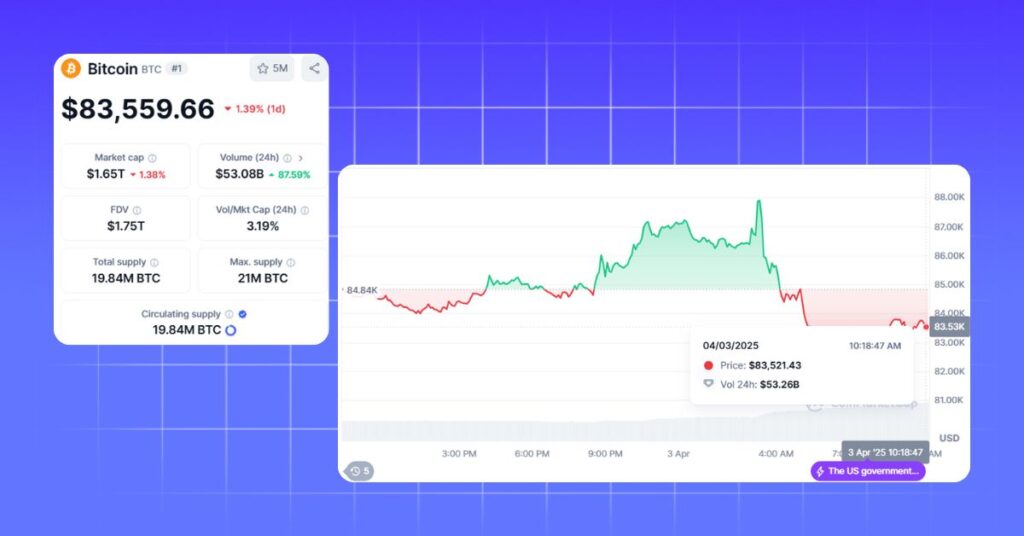In his second term starting in 2025, Donald Trump has ramped up tariff policies to protect the U.S. economy. These measures not only affect traditional trade but also ripple through the cryptocurrency market, a sector highly sensitive to risk and liquidity. This article explores how Trump tariff policies impact crypto and key factors to watch.

Trump Tariff Policy
- 10-20% tariffs on global goods.
- 60% tariffs on Chinese imports.
- 25% tariffs on steel, aluminum, and autos.
Aimed at boosting domestic production, these policies also stir global economic uncertainty.
How Trump Tariff Impact on the Crypto Market
– Short-term Price Volatility:
- Bitcoin dropped from $93,000 to $83,000 after steel/aluminum tariffs.
- Altcoins (ETH, XRP, SOL) fell 7-15% due to risk-off sentiment.

– Liquidity Crunch: Nearly $1 billion in long positions liquidated, making prices more volatile.
– Crypto Mining: 60% tariffs on China raise hardware costs, potentially cutting Bitcoin’s hash rate.
– Long-term Outlook: Inflation and instability could position Bitcoin as a “safe haven”; Trump proposes crypto capital gains tax exemptions.
Related Factors
- Fed Policy: 4.5% inflation may prompt rate hikes, reducing crypto inflows.
- Historical Context: In 2018, tariffs briefly tanked BTC, but it later surged to $20,000.
- Expert Views: Michael Saylor sees inflation as a BTC catalyst; Charles Hoskinson warns of mining challenges.
- Legal Landscape: Trump may replace SEC leadership, easing crypto regulations.
Conclusion
Trump’s tariffs pressure crypto in the short term (price drops, low liquidity), but long-term opportunities could emerge if he follows through on pro-crypto pledges. Investors should track tariffs, Fed moves, and regulatory shifts to navigate this volatile market.
Share on Social Media:
